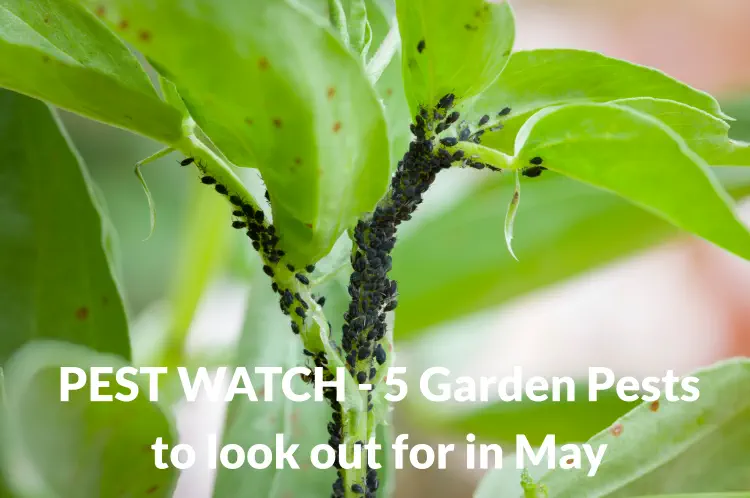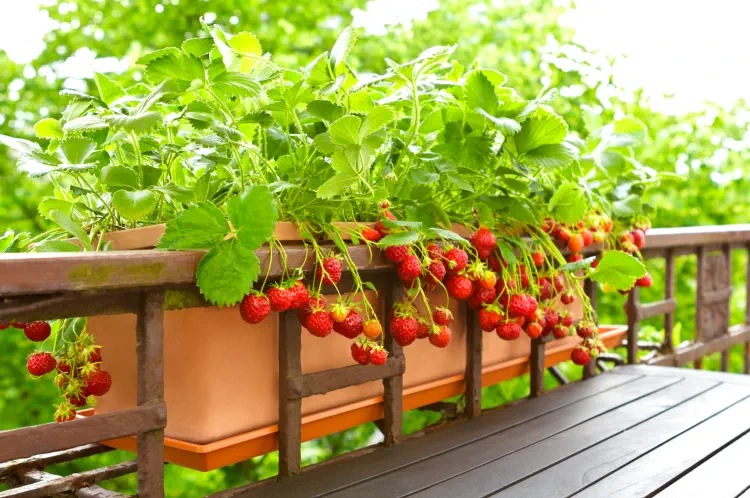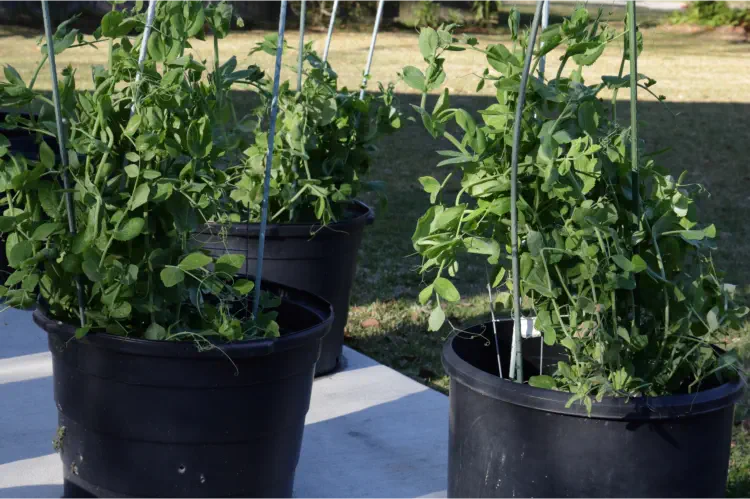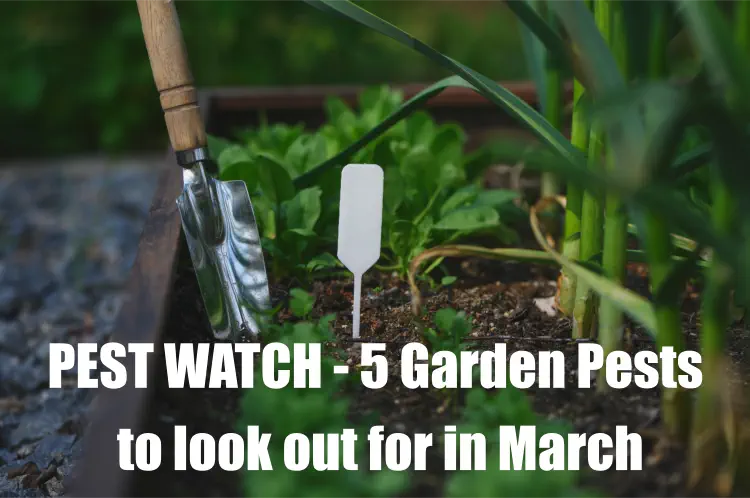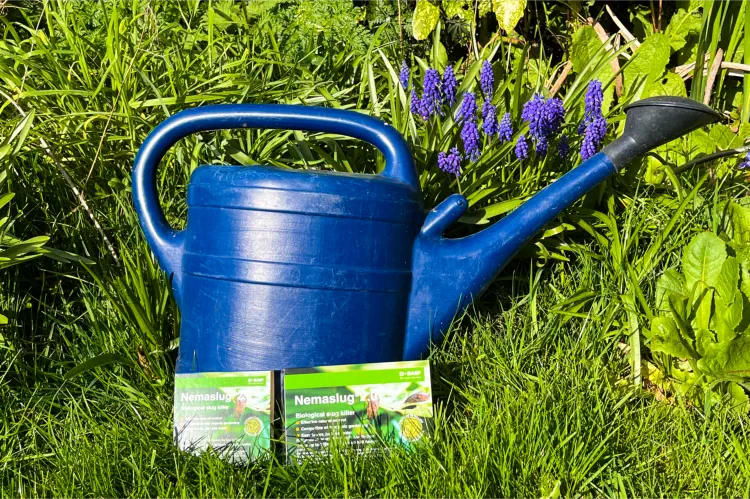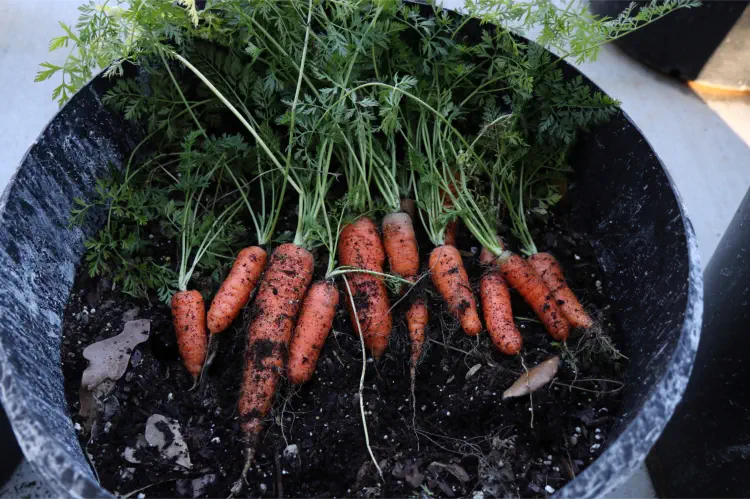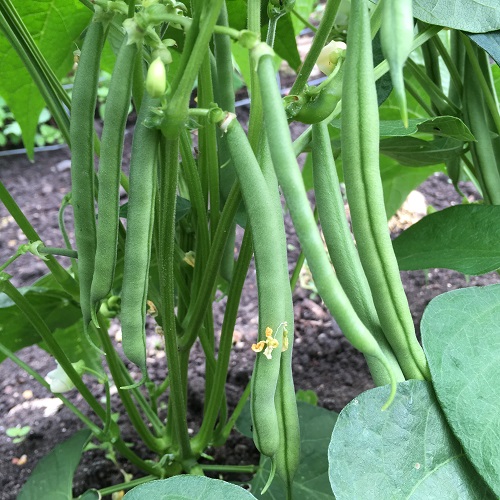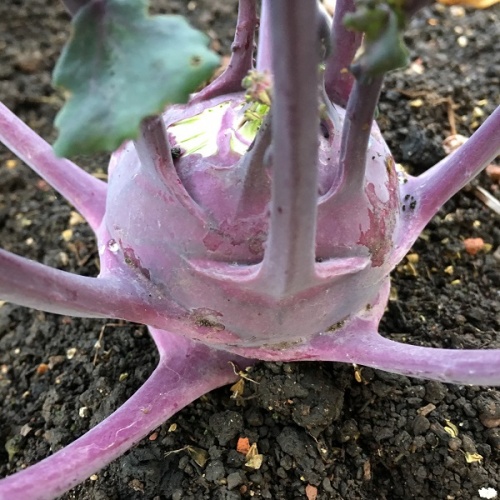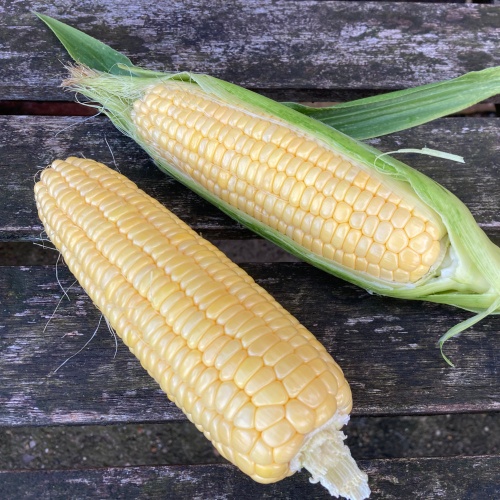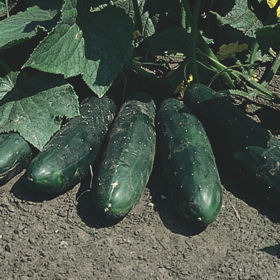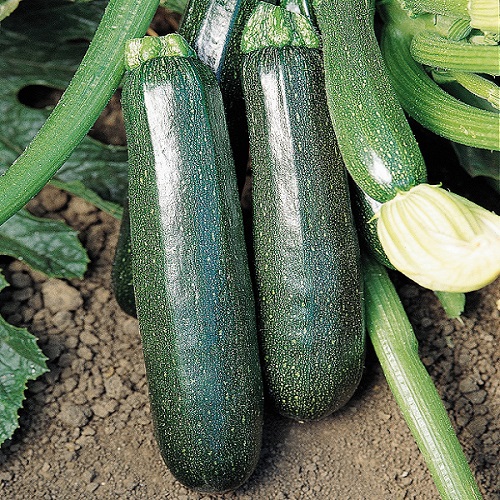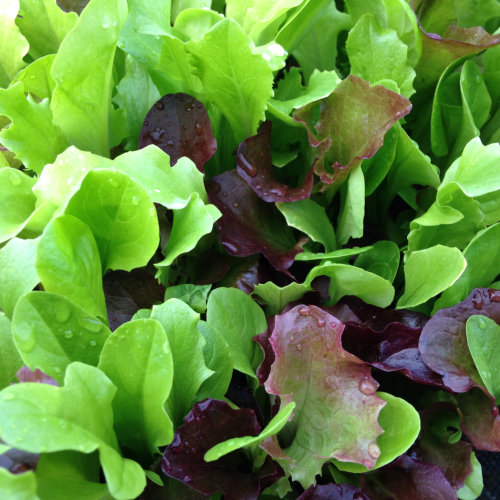As spring unfolds and the garden bursts into life, May heralds a time of vibrant growth and abundant blooms. However, amidst the verdant splendor, gardeners must remain vigilant against the resurgence of common pests eager to feast on tender foliage and burgeoning crops.
Why and How To Harden Off Your Young Seedlings and Plants
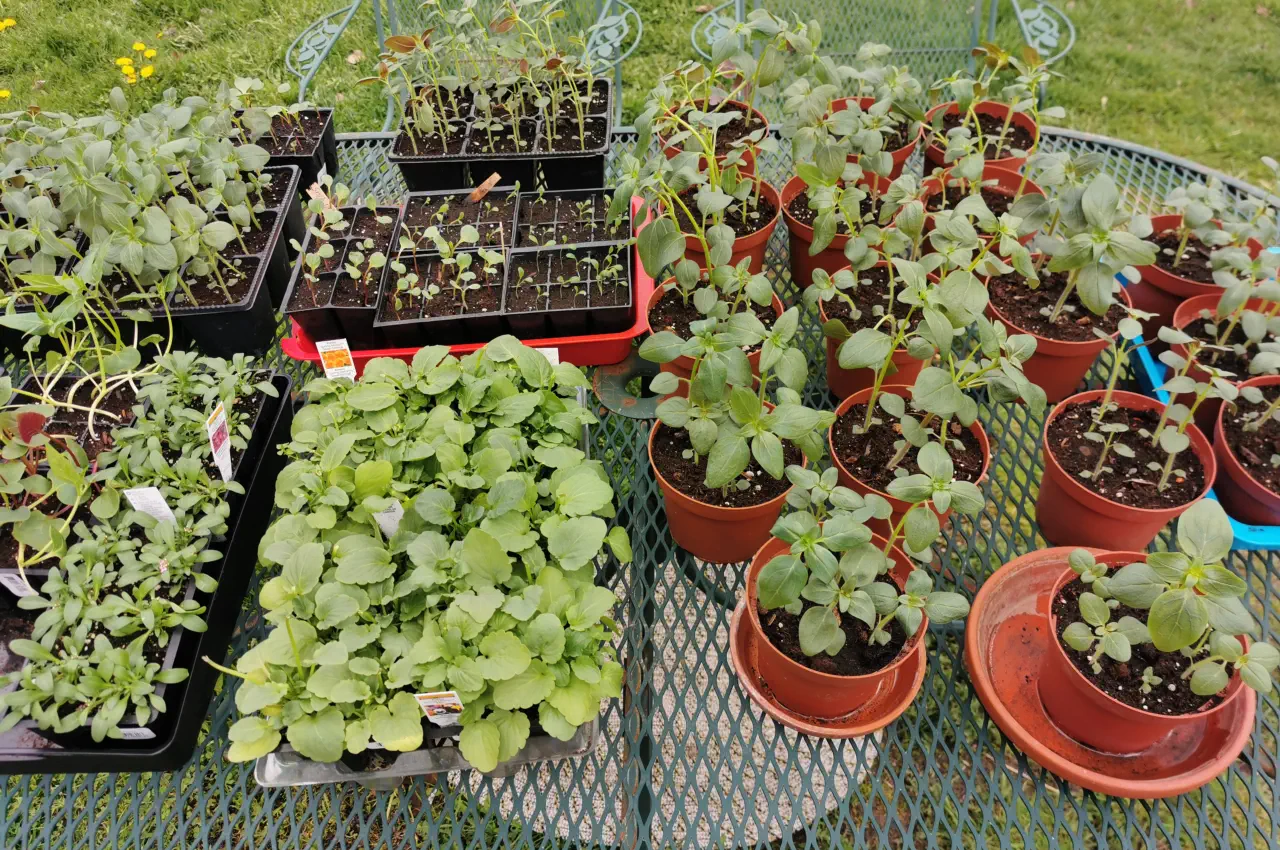
If you want your garden to thrive, it's important to understand how best to care for your seedlings in their early stages of growth. Hardening off seedlings is one step that many gardeners don't think about at the time of sowing, but it can make a big difference in the success of your plants! In this blog post, we'll discuss what hardening off is, why it's important, and how you can do it properly.
Vegetable gardening can be incredibly rewarding; there’s nothing quite like growing your own produce at home! Unfortunately, many people are unaware of the importance of hardening off when they grow their own vegetable seedlings. This process helps prepare young plants for outdoor conditions by gradually exposing them to more wind and sun. By doing this correctly, you can ensure that your plants survive once transferred outside - instead of wilting away or struggling with transplant shock.
With just a little bit of knowledge about the process and some patience, you too can learn how to successfully harden off your vegetable seedlings so that you have a bountiful harvest come summertime! Read on to find out exactly how it's done.
Understanding The Importance Of Hardening Off Your Seedlings
Why is it Necessary?
The controlled environment indoors provides a sheltered and stable climate for seedlings, but moving them directly from this environment to the unpredictable outdoors can lead to transplant shock. Transplant shock occurs when plants experience stress due to sudden changes in temperature, light intensity, wind, and other environmental factors. Hardening off is essential for several reasons:
Temperature Adjustment:
Indoor temperatures are usually more stable than outdoor conditions, which can have fluctuating temperatures. By gradually exposing seedlings to outdoor temperatures, they have the opportunity to adjust to the natural temperature variations, preventing shock.
Sunlight Exposure:
The intensity of sunlight outdoors is significantly stronger than indoor lighting. If seedlings are immediately exposed to full sun, they may suffer from sunburn and dehydration. Hardening off allows plants to adapt gradually to the increased sunlight, reducing the risk of damage.
Wind Resistance:
Indoor environments typically lack the wind exposure that plants will face outdoors. Hardening off helps seedlings develop stronger stems and root systems, making them more resistant to wind stress. This is crucial, especially for tall or delicate plants.
Water Management:
Outdoor conditions may require different watering practices compared to indoor settings. Through the hardening off process, plants can adjust to changes in humidity and soil moisture, minimizing the risk of overwatering or underwatering.
Encouraging Resilience:
Hardening off promotes the development of hardier, more resilient plants. Exposure to natural elements stimulates the production of certain compounds that enhance a plant's ability to withstand environmental stressors.
Preventing Transplant Shock:
Transplanting shock occurs when the plant experiences stress during the transition from the protected environment of seed trays or pots to the garden. Hardening off significantly reduces the likelihood of transplant shock, ensuring a smoother transition and promoting better plant establishment.
In summary, hardening off is a crucial step in the gardening process that prepares seedlings for the challenges of outdoor life. By gradually introducing them to the outdoor environment, you give your plants the best chance to thrive, resulting in healthier, more resilient specimens once they are transplanted into the garden.
How To Gradually Introduce Your Vegetable Seedlings To The Outdoors
The first thing to consider when hardening off is the type of vegetable you are growing. Some varieties require more time than others to adjust to external changes in light, humidity levels, and air temperatures. For instance, tomatoes need a longer period of adjustment than brassicas do when transitioning from indoors to outdoors.
To ensure success with your garden this season, start hardening off your vegetable seedlings at least two weeks before transplanting them into their permanent beds in the garden. Make sure that they're receiving enough water throughout this process as well - not allowing them to dry out will help promote healthy growth once they've been planted permanently outdoors.
Gradually introducing your vegetable seedlings to the outdoors is a crucial step in ensuring their successful transition from the controlled environment of indoor settings to the unpredictable conditions of the garden. Here's a step-by-step guide to help you through the hardening off process:
1. Start Gradually:
Begin the hardening off process about one to two weeks before your planned transplant date. On the first day, expose your seedlings to the outdoor environment for just 1-2 hours during the mildest part of the day, preferably in the morning or late afternoon.
2. Choose the Right Location:
Place your seedlings in a sheltered and shaded area for the initial exposures. This could be under a tree, on a porch, or against a building. Protect them from direct sunlight, strong winds, and heavy rain during these early stages.
3. Increase Exposure Time:
Each day, gradually increase the amount of time your seedlings spend outdoors. Add an additional 1-2 hours to their outdoor exposure, monitoring how they respond to the changing conditions.
4. Monitor Weather Conditions:
Keep a close eye on the weather forecast. If there's an unexpected cold snap or severe weather, it's advisable to bring your seedlings back indoors or provide additional protection. Be cautious of frost, as it can be detrimental to tender seedlings.
5. Adjust Light Exposure:
After a few days, start exposing your seedlings to direct sunlight for short periods. Increase the duration gradually, allowing them to acclimate to the increased light intensity. This step is crucial for preventing sunburn and promoting healthy growth.
6. Increase Wind Exposure:
As your seedlings grow more accustomed to outdoor conditions, gradually expose them to gentle breezes. This helps strengthen their stems and prepares them for the wind they may encounter in the garden.
7. Watering Adjustments:
Adjust your watering routine to reflect the changing environmental conditions. Outdoor air tends to be drier than indoor air, so you may need to water more frequently. However, be cautious not to overwater, as excessive moisture can lead to issues like damping off.
8. Observe for Signs of Stress:
Keep a close eye on your seedlings for any signs of stress, such as wilting, yellowing, or stunted growth. If you notice any adverse effects, consider reducing the duration or intensity of outdoor exposure until the plants recover.
9. Full Exposure Before Transplanting:
By the end of the hardening off period, your seedlings should be able to withstand outdoor conditions for the entire day and night. At this point, they are ready for transplanting into the garden.
10. Transplant with Care:
When transplanting, handle the seedlings gently, and ensure the garden soil is well-prepared. Water them thoroughly after transplanting to help them settle into their new environment.
Remember that the specific needs of your vegetable seedlings may vary based on the plant species, so be attentive to their individual requirements during the hardening off process. With patience and careful observation, you'll foster robust and resilient plants ready to thrive in your garden..
The Do's And Don'ts Of Hardening Off Your Vegetable Seedlings
Hardening off your vegetable seedlings is a necessary part of their growth process. To ensure that they are adequately protected and will grow into healthy plants, it's important to understand the do’s and don'ts of hardening off techniques.
The first step in this process is to provide wind protection for your seedlings. This can be done by using garden fabric or row covers to shield them from strong winds. You'll also want to avoid exposing them to direct sunlight for too long as this could damage their fragile leaves. Additionally, make sure you water the soil around the seedling regularly throughout this period so it doesn't dry out; however, be careful not to overwater as this can lead to root rot.
Finally, when removing any protective materials from your seedlings, take care not to disrupt the delicate roots or stems of the plant. If possible, use scissors or pruning shears instead of pulling the material away manually. Doing so ensures that your seedlings remain healthy and ready for transplantation into their permanent home once hardened off properly!
How Long Should You Harden Off Your Vegetable Seedlings?
Once you understand the do's and don'ts of hardening off your vegetable seedlings, it’s important to know how long you should be hardening them off for. The hardening off time frame can vary depending on the type of plant and the environment in which they are growing. Generally speaking, most plants will need a minimum of two weeks to become fully hardened off before planting outside.
When dealing with more sensitive or delicate varieties, such as lettuces or tomatoes, the duration may need to be extended up to four weeks depending on local conditions and temperatures. During this process, start by exposing your seedlings gradually to their new environment over several days. This means taking them out into direct sunlight for increasing lengths of time each day until they have grown accustomed to being outdoors without wilting or dying from shock.
During this period also make sure that you water your seedlings regularly as needed so that they remain sufficiently hydrated during the entire process; otherwise, dehydration can cause irreversible damage if not caught early enough. By adhering to these principles when hardening off your vegetables, you should come away with healthy full-grown produce ready for harvesting within no time at all!
Final Thoughts
The process of hardening off your vegetable seedlings is an essential part of the growing cycle. It's a simple but important procedure that can make all the difference to your garden success. By gradually introducing them to outdoor conditions, you will be giving them the best chance for survival once they are planted in their permanent location. With just a few days of patience and care, you'll find yourself with strong and healthy plants ready to produce plenty of delicious vegetables!
It's always a good idea to review the do's and don'ts when it comes to hardening off your vegetable seedlings—after all, this is about getting it right from the start. And if you're ever unsure how long you should be hardening off your seedlings, remember that slower is usually better; take as much time as necessary until they have fully adapted before planting them out.
So now that you know more about hardening off your vegetable seedlings, why not give it a go? With minimal effort on your part, you can ensure your plants get off to the perfect start!
Got any tips for hardening off young seedlings? Let us know with a comment below....
All blog content on this page is copyright of SimplySeed and is not to be reproduced without prior written permission. ©

